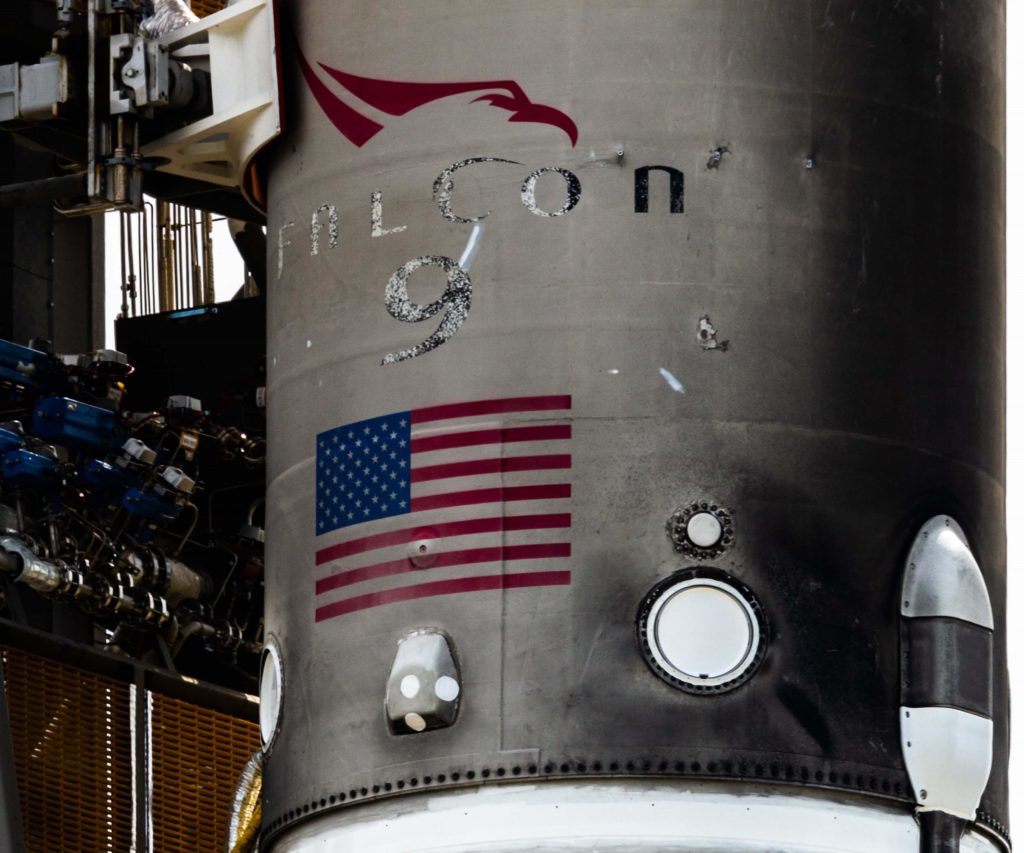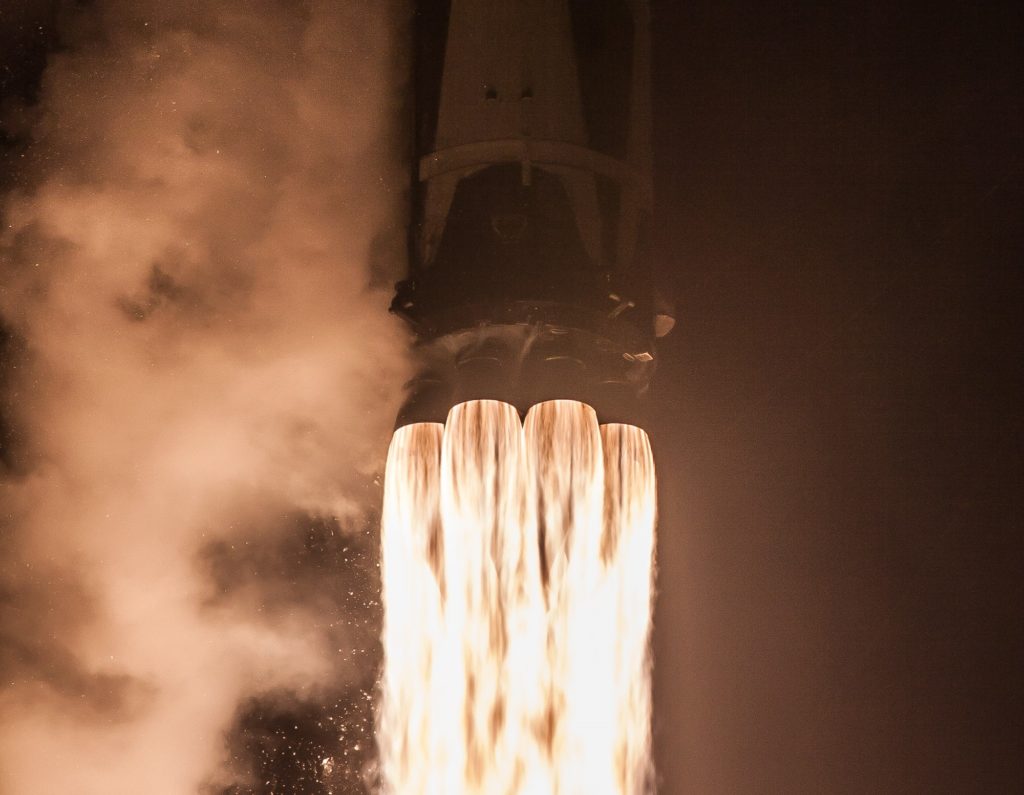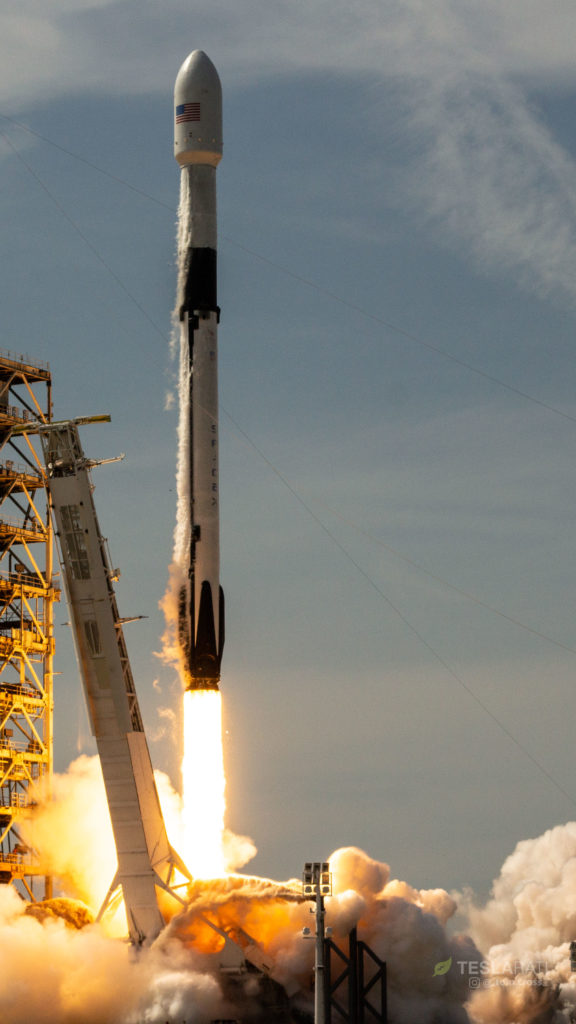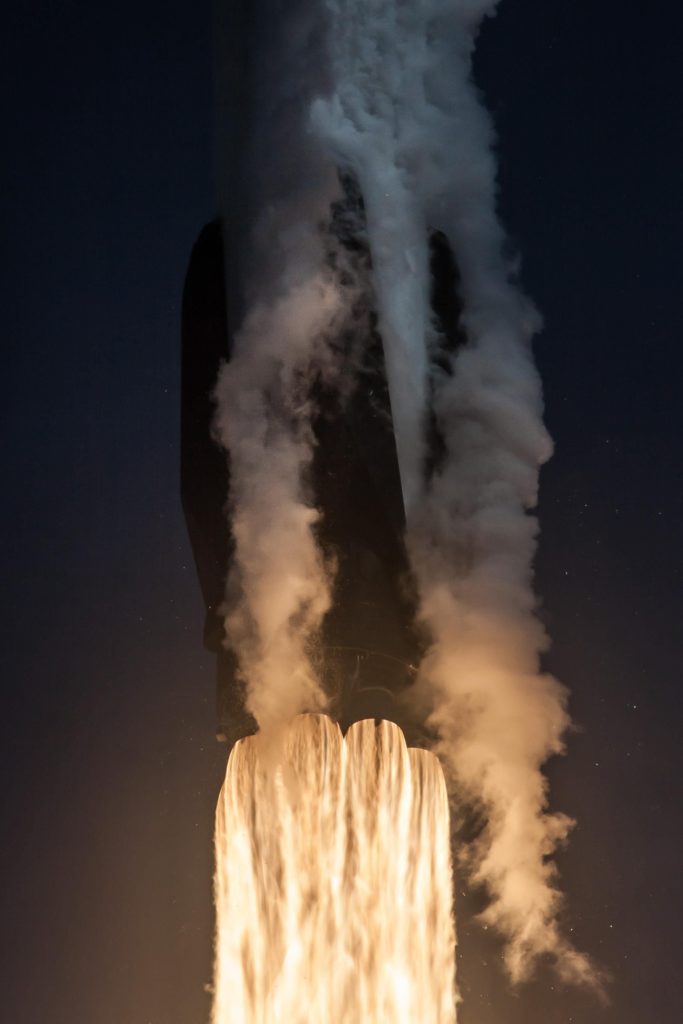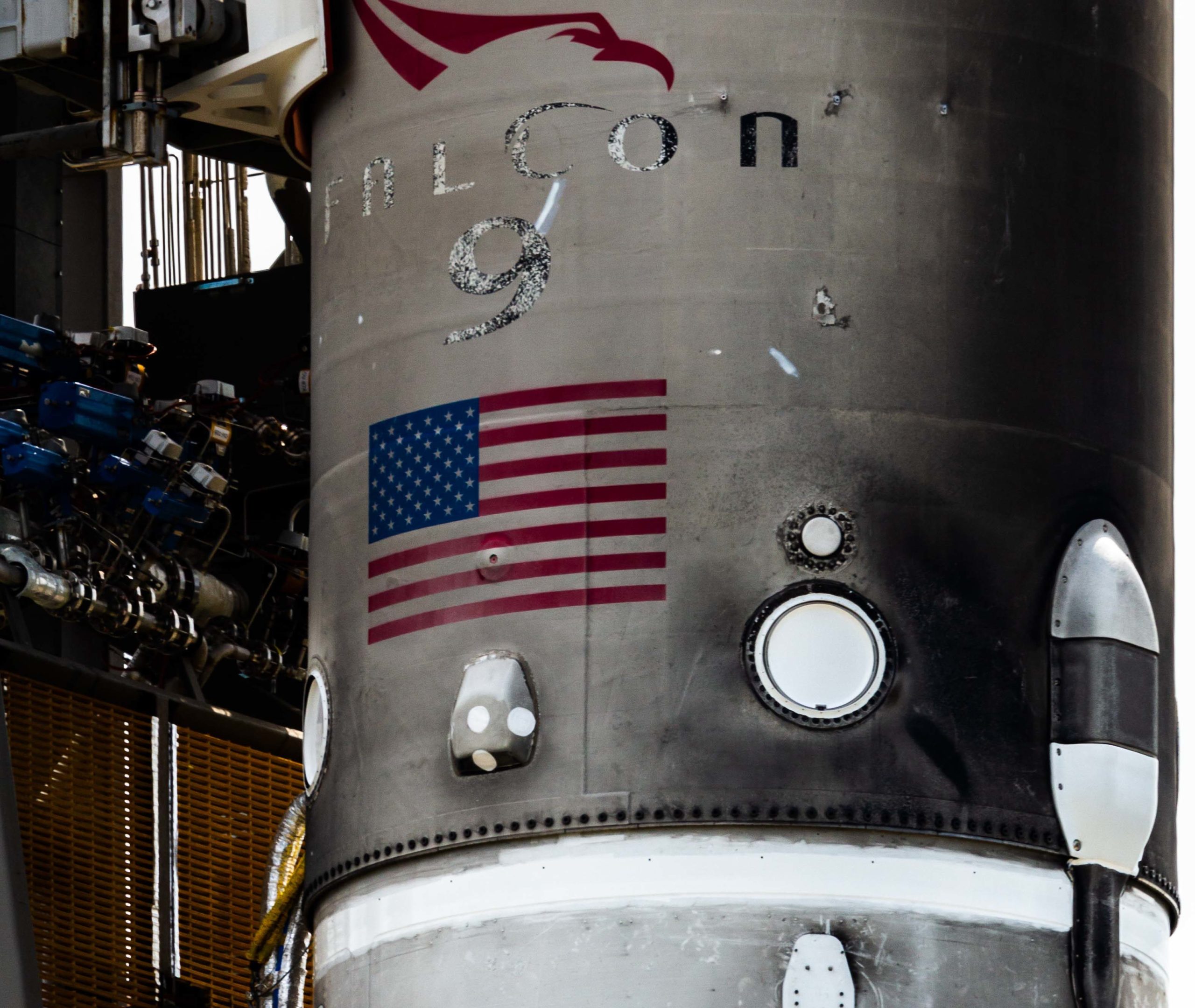
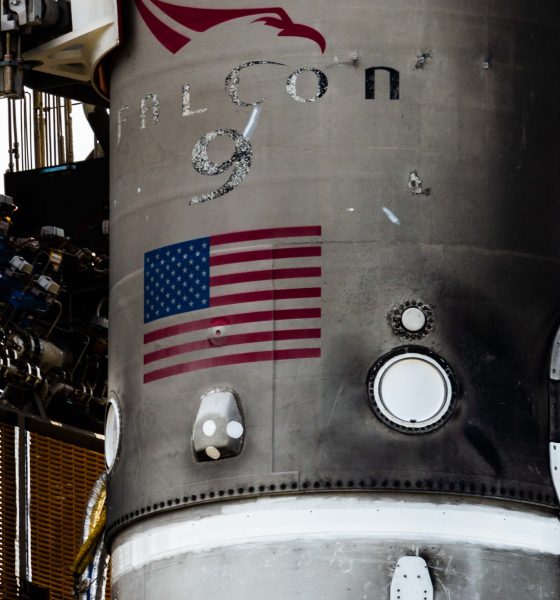
News
SpaceX will transition all launches to Falcon 9 Block 5 rockets after next mission
SpaceX’s 13th reuse of a Falcon 9 booster marked the second-to-last orbital mission of older boosters before the rocket’s highly reusable Block 5 upgrade takes over all future commercial launches.
If only for the staggering rise of SpaceX’s program of reusable rockets, June 4’s Falcon 9 launch was novel and thrilling in part because its flight-proven booster was intentionally stripped of all reuse-related hardware to bestow as much performance as possible on the mission’s large geostationary communications satellite payload, named SES-12. While this practice of intentionally expending non-Block 5 flight-proven boosters after launch has actually been fairly common over the course of the last seven Falcon 9 reflights, excluding Falcon Heavy – SpaceX is, in essence, betting heavily on the viability and success of the rocket’s quasi-final Block 5 upgrade.

SpaceX’s second to last commercial launch with a non-Block 5 Falcon 9 was completed around 1 am EST June 4. It’s once flight-proven booster ended its life in the Atlantic soon after liftoff. (Tom Cross)
Following June 4’s SES-12 launch, after which Falcon 9 S1 (B1040, previously flown on the September 2017 launch of a classified X-37B spaceplane) arced down its final parabola into the Atlantic, SpaceX has just a single commercial launch of a Block 4 booster scheduled. In fact, that launch happens to be next up on the company’s manifest: currently no earlier than (NET) June 28, CRS-15 will see the same booster (B1045) that launched NASA’s TESS exoplanet observatory scarcely ten weeks prior send a refurbished Cargo Dragon to the International Space Station. After CRS-15, which will also see its booster expended in the Atlantic, just one flightworthy Block 4 rocket will remain in SpaceX’s fleet, and that Falcon 9 booster is understood to be undergoing refurbishment for its final reflight. That mission, however, is a suborbital demonstration designed to prove that SpaceX’s Crew Dragon spacecraft can wrest its human passengers out of harm’s way in the event of a launch vehicle failure during flight (SpaceX already proved it can accomplish the same task while the rocket is still on the launch pad in a 2015 demo).
https://twitter.com/_TomCross_/status/1003509362906853376
No turning back now
While a critical path for SpaceX’s future of reliably delivering crew to orbit, its suborbital nature makes categorically distinct from past and future Falcon launches, all of which have been conducted with the intent of placing payload(s) into Earth orbit. Thus we arrive back at B1045 and CRS-15, currently scheduled as both SpaceX’s next launch and the final orbital mission before Falcon 9/Heavy Block 5 becomes the company’s only operational route to space for at least the next two years, give or take half a year. It’s thus somewhat poetic that the booster tasked with CRS-15 will easily smash SpaceX’s previous record for refurbishment (135 days) by almost a factor of two, going from drone ship recovery to reflight in as few as 71 days. Whatever it becomes, that refurbishment record will likely be broken by the first Block 5 reflight, a trend that will almost certainly continue until SpaceX reaches Musk’s fabled 24-hour turnaround, perhaps before the end of next year.
- A flight-proven Falcon 9, B1040, looking particularly well-done before its second and final launch on June 4. (Tom Cross)
- SES-12’s Block 4 booster roars into the air on its final flight. (SpaceX)
- Falcon 9 Block 5 completed its first launch on May 11, carrying the Bangabandhu-1 communications satellite to geostationary transfer orbit. (Tom Cross)
- It may not immediately look like a major departure from past versions, but Block 5 could theoretically usher in 10-100 reflights of a single rocket booster. (SpaceX)
Extrapolating from the launch company’s recent history, the culmination of CRS-15 will potentially leave SpaceX with as few as two Falcon 9 Block 5 boosters as its entire flight-ready rocket fleet, despite anywhere from 12 to 16 launches remaining on the second half of the company’s 2018 manifest. Currently standing at six boosters produced in 2018, roughly eight to be completed before the end of the year per COO and President Gwynne Shotwell (in this case likely boosters B1048-1056), an achievement that would grow the ranks of the company’s fleet of new Block 5 boosters to ten total. But, assuming a core is delivered from the Hawthorne factory every month, SpaceX will need to reuse Block 5 boosters as early as July to prevent considerable delays to their 2018 manifest, delays that would undoubtedly push multiple missions into 2019.
Here’s to hoping that the Block 5 upgrade is as incredible of a success as SpaceX has designed it to be. Follow the Teslarati team for real-time updates, glimpses behind the scenes, and photos from Teslarati’s East and West Coast photographers.
Teslarati – Instagram – Twitter
Tom Cross – Twitter
Pauline Acalin – Twitter
Eric Ralph – Twitter

News
Tesla FSD fleet is nearing 7 billion total miles, including 2.5 billion city miles
As can be seen on Tesla’s official FSD webpage, vehicles equipped with the system have now navigated over 6.99 billion miles.

Tesla’s Full Self-Driving (Supervised) fleet is closing in on almost 7 billion total miles driven, as per data posted by the company on its official FSD webpage.
These figures hint at the massive scale of data fueling Tesla’s rapid FSD improvements, which have been quite notable as of late.
FSD mileage milestones
As can be seen on Tesla’s official FSD webpage, vehicles equipped with the system have now navigated over 6.99 billion miles. Tesla owner and avid FSD tester Whole Mars Catalog also shared a screenshot indicating that from the nearly 7 billion miles traveled by the FSD fleet, more than 2.5 billion miles were driven inside cities.
City miles are particularly valuable for complex urban scenarios like unprotected turns, pedestrian interactions, and traffic lights. This is also the difference-maker for FSD, as only complex solutions, such as Waymo’s self-driving taxis, operate similarly on inner-city streets. And even then, incidents such as the San Francisco blackouts have proven challenging for sensor-rich vehicles like Waymos.
Tesla’s data edge
Tesla has a number of advantages in the autonomous vehicle sector, one of which is the size of its fleet and the number of vehicles training FSD on real-world roads. Tesla’s nearly 7 billion FSD miles then allow the company to roll out updates that make its vehicles behave like they are being driven by experienced drivers, even if they are operating on their own.
So notable are Tesla’s improvements to FSD that NVIDIA Director of Robotics Jim Fan, after experiencing FSD v14, noted that the system is the first AI that passes what he described as a “Physical Turing Test.”
“Despite knowing exactly how robot learning works, I still find it magical watching the steering wheel turn by itself. First it feels surreal, next it becomes routine. Then, like the smartphone, taking it away actively hurts. This is how humanity gets rewired and glued to god-like technologies,” Fan wrote in a post on X.
News
Tesla starts showing how FSD will change lives in Europe
Local officials tested the system on narrow country roads and were impressed by FSD’s smooth, human-like driving, with some calling the service a game-changer for everyday life in areas that are far from urban centers.

Tesla has launched Europe’s first public shuttle service using Full Self-Driving (Supervised) in the rural Eifelkreis Bitburg-Prüm region of Germany, demonstrating how the technology can restore independence and mobility for people who struggle with limited transport options.
Local officials tested the system on narrow country roads and were impressed by FSD’s smooth, human-like driving, with some calling the service a game-changer for everyday life in areas that are far from urban centers.
Officials see real impact on rural residents
Arzfeld Mayor Johannes Kuhl and District Administrator Andreas Kruppert personally tested the Tesla shuttle service. This allowed them to see just how well FSD navigated winding lanes and rural roads confidently. Kruppert said, “Autonomous driving sounds like science fiction to many, but we simply see here that it works totally well in rural regions too.” Kuhl, for his part, also noted that FSD “feels like a very experienced driver.”
The pilot complements the area’s “Citizen Bus” program, which provides on-demand rides for elderly residents who can no longer drive themselves. Tesla Europe shared a video of a demonstration of the service, highlighting how FSD gives people their freedom back, even in places where public transport is not as prevalent.
What the Ministry for Economic Affairs and Transport says
Rhineland-Palatinate’s Minister Daniela Schmitt supported the project, praising the collaboration that made this “first of its kind in Europe” possible. As per the ministry, the rural rollout for the service shows FSD’s potential beyond major cities, and it delivers tangible benefits like grocery runs, doctor visits, and social connections for isolated residents.
“Reliable and flexible mobility is especially vital in rural areas. With the launch of a shuttle service using self-driving vehicles (FSD supervised) by Tesla in the Eifelkreis Bitburg-Prüm, an innovative pilot project is now getting underway that complements local community bus services. It is the first project of its kind in Europe.
“The result is a real gain for rural mobility: greater accessibility, more flexibility and tangible benefits for everyday life. A strong signal for innovation, cooperation and future-oriented mobility beyond urban centers,” the ministry wrote in a LinkedIn post.
News
Tesla China quietly posts Robotaxi-related job listing
Tesla China is currently seeking a Low Voltage Electrical Engineer to work on circuit board design for the company’s autonomous vehicles.

Tesla has posted a new job listing in Shanghai explicitly tied to its Robotaxi program, fueling speculation that the company is preparing to launch its dedicated autonomous ride-hailing service in China.
As noted in the listing, Tesla China is currently seeking a Low Voltage Electrical Engineer to work on circuit board design for the company’s autonomous vehicles.
Robotaxi-specific role
The listing, which was shared on social media platform X by industry watcher @tslaming, suggested that Tesla China is looking to fill the role urgently. The job listing itself specifically mentions that the person hired for the role will be working on the Low Voltage Hardware team, which would design the circuit boards that would serve as the nervous system of the Robotaxi.
Key tasks for the role, as indicated in the job listing, include collaboration with PCB layout, firmware, mechanical, program management, and validation teams, among other responsibilities. The role is based in Shanghai.
China Robotaxi launch
China represents a massive potential market for robotaxis, with its dense urban centers and supportive policies in select cities. Tesla has limited permission to roll out FSD in the country, though despite this, its vehicles have been hailed as among the best in the market when it comes to autonomous features. So far, at least, it appears that China supports Tesla’s FSD and Robotaxi rollout.
This was hinted at in November, when Tesla brought the Cybercab to the 8th China International Import Expo (CIIE) in Shanghai, marking the first time that the autonomous two-seater was brought to the Asia-Pacific region. The vehicle, despite not having a release date in China, received a significant amount of interest among the event’s attendees.
